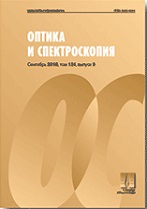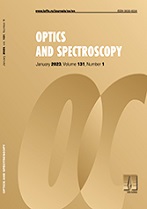|
Spectroscopy and physics of atoms and molecules
Features of the excitation of lines of the principal series of zinc-subgroup atoms by electron impact. II. Zinc
H. G. Bohachov, E. Yu. Remeta
Institute of Electron Physics, National Academy of Sciences of Ukraine
Abstract:
Using the technique of crossed beams of slow electrons and zinc atoms, the excitation functions of four spectral lines of Zn I principal series corresponding to the $4snp^{1}P^\circ_{1}\to4s^{2}$ ${}^{1}S_{0}$ transitions for $n$ = 4, 5, 6, 7 are measured. Their wavelengths are 213.9, 158.9, 145.8, 140.4 nm, respectively. In the energy range 11–18 eV, these functions revealed the manifestation of the effect of collision interaction of electrons (slow scattered and fast emitted) during the decay of the autoionization state. At incident electron energies of $\sim$11–13 and 15–18 eV, this interaction leads to an additional population of the initial levels for these lines and, correspondingly, to the formation of maxima on their excitation functions due to the capture of the scattered electron at the indicated excited levels. The terms of autoionizing states of the atom responsible for the observed maxima are established. The combined effect of the decay of these autoionizing states and the post-collision interaction is expressed in the energy shift of the maxima on the excitation functions relative to the positions of the corresponding autoionizing states. In the classical approximation, the effective widths of the electronic decay of autoionizing states are estimated by direct calculations. For the estimations, exact and approximate formulas are used. The latter are valid for various relations between the magnitude of the post-collision shift of the maxima on the excitation functions and the electron binding energy at the atomic level. They are used to determine the effective widths when the experimental shifts are approximated by the least squares method.
Keywords:
collisions of electrons with atoms, excitation, vacuum ultraviolet, autoionizing state, post-collision interaction.
Received: 03.01.2020
Revised: 31.03.2020
Accepted: 02.06.2020
Citation:
H. G. Bohachov, E. Yu. Remeta, “Features of the excitation of lines of the principal series of zinc-subgroup atoms by electron impact. II. Zinc”, Optics and Spectroscopy, 128:10 (2020), 1407–1419; Optics and Spectroscopy, 128:10 (2020), 1517–1529
Linking options:
https://www.mathnet.ru/eng/os269 https://www.mathnet.ru/eng/os/v128/i10/p1407
|


| Statistics & downloads: |
| Abstract page: | 23 | | Full-text PDF : | 9 |
|





 Contact us:
Contact us: Terms of Use
Terms of Use
 Registration to the website
Registration to the website Logotypes
Logotypes







 Citation in format
Citation in format 